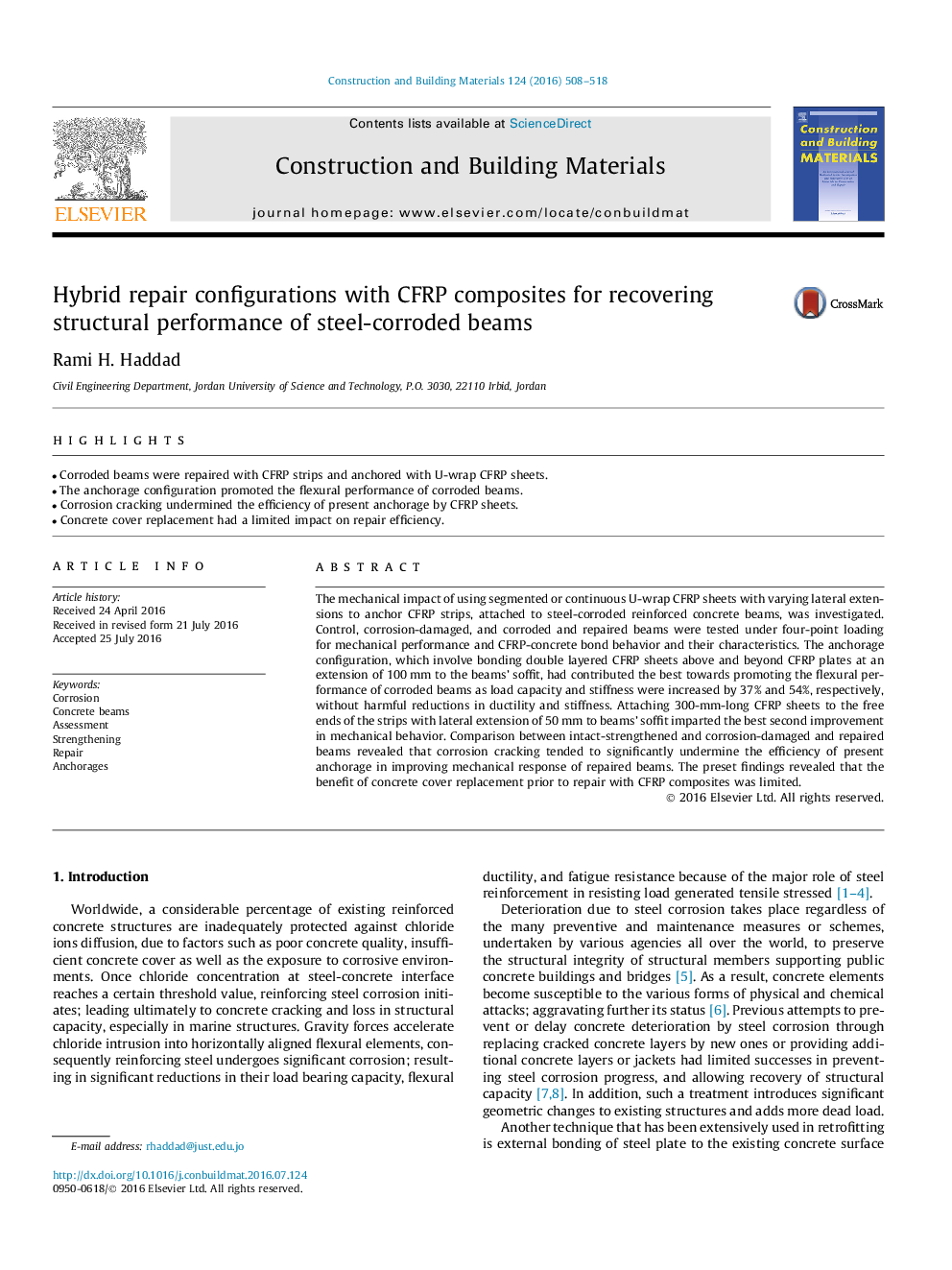| Article ID | Journal | Published Year | Pages | File Type |
|---|---|---|---|---|
| 255704 | Construction and Building Materials | 2016 | 11 Pages |
•Corroded beams were repaired with CFRP strips and anchored with U-wrap CFRP sheets.•The anchorage configuration promoted the flexural performance of corroded beams.•Corrosion cracking undermined the efficiency of present anchorage by CFRP sheets.•Concrete cover replacement had a limited impact on repair efficiency.
The mechanical impact of using segmented or continuous U-wrap CFRP sheets with varying lateral extensions to anchor CFRP strips, attached to steel-corroded reinforced concrete beams, was investigated. Control, corrosion-damaged, and corroded and repaired beams were tested under four-point loading for mechanical performance and CFRP-concrete bond behavior and their characteristics. The anchorage configuration, which involve bonding double layered CFRP sheets above and beyond CFRP plates at an extension of 100 mm to the beams’ soffit, had contributed the best towards promoting the flexural performance of corroded beams as load capacity and stiffness were increased by 37% and 54%, respectively, without harmful reductions in ductility and stiffness. Attaching 300-mm-long CFRP sheets to the free ends of the strips with lateral extension of 50 mm to beams’ soffit imparted the best second improvement in mechanical behavior. Comparison between intact-strengthened and corrosion-damaged and repaired beams revealed that corrosion cracking tended to significantly undermine the efficiency of present anchorage in improving mechanical response of repaired beams. The preset findings revealed that the benefit of concrete cover replacement prior to repair with CFRP composites was limited.
